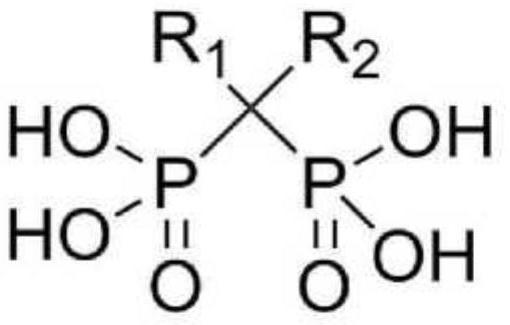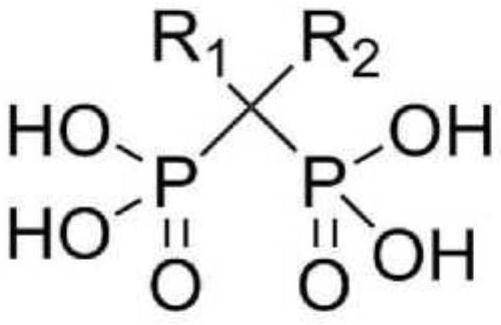Etching liquid composition and preparation method thereof
A technology of composition and etching solution, applied in semiconductor/solid-state device manufacturing, semiconductor devices, electrical components, etc., can solve problems such as increased metal stability, decreased etching performance of etching solution, shortage, etc., and achieves minimization of bias (bias) Defects, improved etching characteristics, improved residue effects
- Summary
- Abstract
- Description
- Claims
- Application Information
AI Technical Summary
Problems solved by technology
Method used
Image
Examples
experiment example 1
[0079] Experimental Example 1: Bias Evaluation
[0080] In order to evaluate the etching rate of the etching solution compositions according to the examples and comparative examples, after forming a three-layer film of ITO (indium tin oxide) / Ag / ITO as a test piece on a substrate, patterned light was formed on the three-layer film. photoresist. The above-mentioned substrates were subjected to an etching process using the thin-film etching liquid compositions according to the examples and comparative examples.
[0081] After filling a 10 kg wet etching machine with the etching liquid compositions of the Examples and Comparative Examples, the temperature was set to 40° C., and etching treatment was performed for 100 seconds on 1,000 test pieces to be evaluated. . After rinsing the etched sample with ultrapure water for about 60 seconds, at 3.0kgf / cm 2 nitrogen drying under pressure.
[0082] A scanning electron microscope (SEM; model: SU-8010, HITACHI) was used to measure the...
experiment example 2
[0083] Experimental Example 2: Residue Evaluation
[0084] In order to evaluate the degree of residue after etching with the etching solution compositions according to the Examples and Comparative Examples, each test piece according to the results of Experimental Example 1 was observed using a scanning electron microscope, and passed through the area between the ITO / Ag / ITO wirings. The area of the remaining metal film is used to determine whether residues are formed.
[0085] Residue Evaluation Benchmark
[0086] None: No residue is produced
[0087] Yes: produce residue
experiment example 3
[0088] Experimental Example 3: Evaluation of Precipitates
[0089] In order to evaluate the degree of deposit formation in the etching process of the etching solution compositions according to the Examples and Comparative Examples, after forming the Ti / Al / Ti three-layer film, a photoresist was patterned on the above-mentioned three-layer film. After dry etching the patterned substrate, a substrate having a Ti / Al / Ti wiring having a width of 20 μm was produced by development. After that, after forming the ITO (indium tin oxide) / Ag / ITO three-layer film to prepare a substrate for evaluation, as shown in Example 1, the Examples and Comparative Examples were evaluated, and observation according to the scanning electron microscope was used. Each test piece was evaluated to determine whether residue formed. The amount of silver (Ag) particles generated at the upper end of the Ti / Al / Ti wiring was measured and evaluated according to the following criteria, as shown in Table 2.
[0090...
PUM
| Property | Measurement | Unit |
|---|---|---|
| width | aaaaa | aaaaa |
Abstract
Description
Claims
Application Information
 Login to View More
Login to View More - Generate Ideas
- Intellectual Property
- Life Sciences
- Materials
- Tech Scout
- Unparalleled Data Quality
- Higher Quality Content
- 60% Fewer Hallucinations
Browse by: Latest US Patents, China's latest patents, Technical Efficacy Thesaurus, Application Domain, Technology Topic, Popular Technical Reports.
© 2025 PatSnap. All rights reserved.Legal|Privacy policy|Modern Slavery Act Transparency Statement|Sitemap|About US| Contact US: help@patsnap.com



